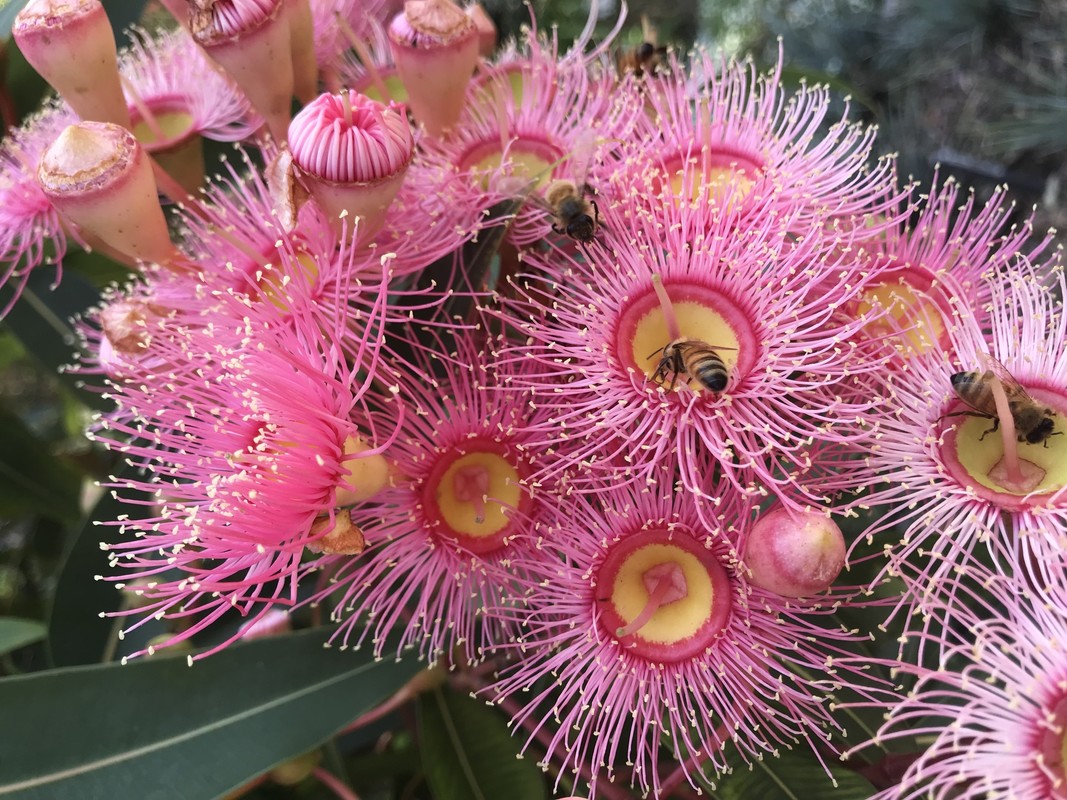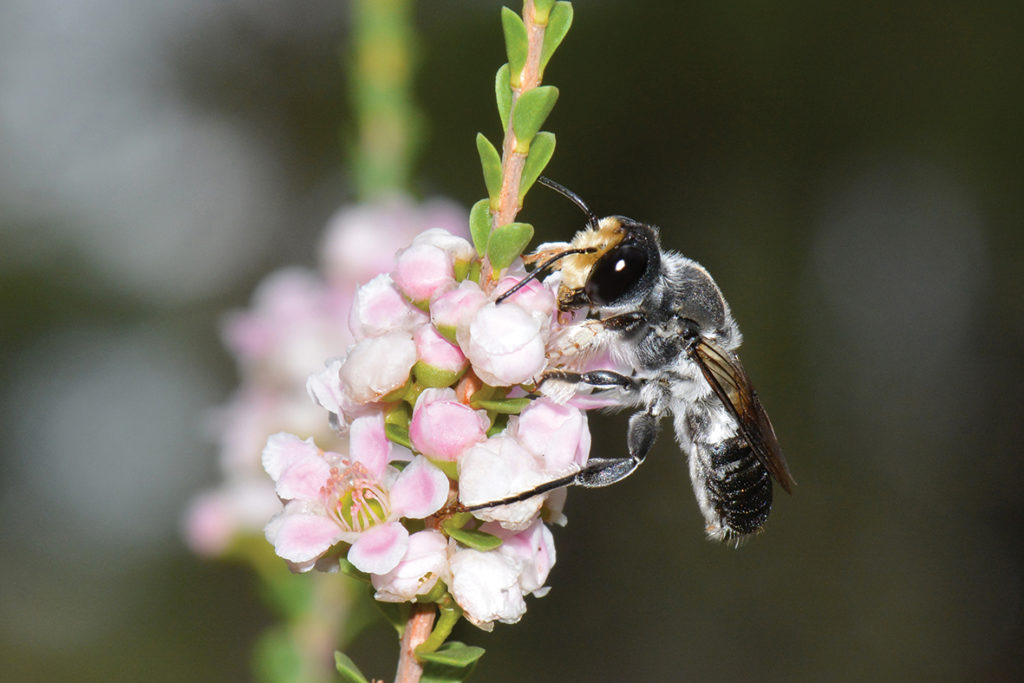
We’re celebrating World Bee Day by outlining the impact of both native and honey bees, as well as how you can support them. Image: Kirsten Lea.
There are more than 20,000 different species of bees worldwide, and Australia is home to at least 2000 native bee species. Some species are social and live in colonies, like the well-known European honey bee, but many are solitary insects. One important thing they have in common is their vital role in pollination.
May 20 marks the United Nations’ World Bee Day. This date on the global calendar celebrates bees and other insect pollinators for their essential role in keeping global ecosystems healthy.
Nearly 90 per cent of the world’s wildflower plant species depend either entirely or partially on insect pollination. From a food security perspective, bees are responsible for pollinating most of our food crops and a large amount of our agricultural land.
Our research scientist Dr John Roberts says regardless of the species, whether native or honey bee, Australia has some of the healthiest bees in the world. Here’s how you can celebrate World Bee Day.
Honey bees
Our scientists work to help the bee industry keep healthy and happy bees. As a result, John says we don’t see colony losses that other countries overseas experience from pests and diseases.
“We’ve put a lot of effort keeping pests like Varroa mite out of Australia. Therefore, maintaining our enviable biosecurity status is key to keeping healthy bees,” John says.
“There’s always a risk that Varroa could arrive, and if it does it will be a game changer to our bee populations and beekeeping practices.”
While Australia is Varroa-free for now, a challenge for beekeepers is ensuring bees have plenty of flowers to collect nectar and pollen. The recent bushfires combined with more variable and extreme weather conditions make it harder for beekeepers to maintain good nutrition in their hives.
Native bees
Unlike the honey bee, most native bees don’t produce honey – they just collect enough nectar and pollen to provide food stores for their nests. In Australia, we do have stingless bees that live in colonies and produce their own type of honey, which can be collected.
The single biggest concern for native bees is habitat loss, which is a global problem. Urban development has impacted on our native bees, as well as native bumblebees in the US and Europe. But we have some tips on how to make your garden native bee friendly.

This Megachile monstrosa is loving its plants! Image: Jean and Fred Hort.
How to help our bees
The best way we can help bees is to promote pollination, keep disease out and protect bees from pesticides.
Support pollination
If you’re in the city, plant nectar-bearing flowers in your garden. If you don’t have a garden, plant a window box or plant on your balcony. Bees love rosemary, banksias, lavender, catmint, comfrey and echiums.
If you’re in a rural setting, create a diverse landscape and break up monocultures as much as possible.
Keep diseases and pests out
Adhere to our strict biosecurity rules to help keep pests and diseases destructive to bees out of our country.
Avoid pesticides
If you need to use pesticides try to use those that do not harm bees. Spray when there’s no wind, a good time is early in the morning or late at night.
Celebrate World Bee Day
Here’s how you can celebrate bees not just today, but every day.
- Buy honey or honey-based products
- Make your own beeswax products such as candles, lip balm or surfboard wax
- Plant a pollinating flower or garden
- Look for a native bee nest
- Raise awareness about the importance of bees

